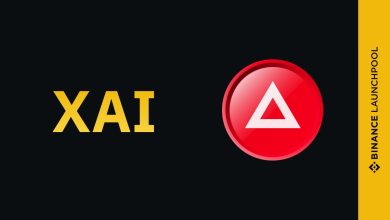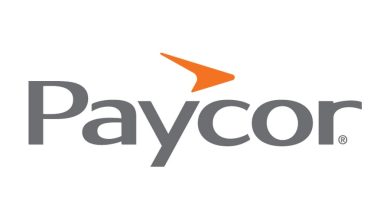How Ethereum Is Leading the Charge in the NFT Market

The rise of non-fungible tokens (NFTs) has revolutionized the way we think about ownership, art, and digital assets. At the forefront of this movement is Ethereum, the blockchain platform that has become synonymous with the NFT market. From blockchain art to virtual real estate, Ethereum’s infrastructure has empowered creators and collectors alike, driving the explosive growth of NFTs. This article explores how Ethereum is leading the charge in the NFT market and what it means for the future of digital ownership.
What Are NFTs?
Before diving into Ethereum’s role, it’s essential to understand what NFTs are. Non-fungible tokens are unique digital assets that represent ownership of a specific item or piece of content on the blockchain. Unlike cryptocurrencies like Bitcoin or Ether, which are fungible and can be exchanged on a one-to-one basis, NFTs are one-of-a-kind and cannot be replicated. This uniqueness makes NFTs ideal for representing digital art, collectibles, music, videos, and even virtual real estate.
Ethereum: The Backbone of the NFT Market
Ethereum is the leading blockchain for NFTs, and its dominance in the market is no coincidence. Several factors contribute to Ethereum’s central role in the NFT ecosystem:
1. Smart Contracts and ERC-721 Standard
Ethereum’s smart contract functionality is the foundation of the NFT market. Smart contracts are self-executing contracts with the terms of the agreement directly written into code. They automate processes like verifying ownership, transferring assets, and enforcing royalties, making them perfect for NFTs.
The ERC-721 token standard, developed on Ethereum, is what makes NFTs possible. This standard defines how to create unique tokens on the Ethereum blockchain, ensuring that each token is distinct and can be owned, transferred, or sold. This innovation allowed developers to start building NFT platforms and marketplaces, setting the stage for the NFT boom.
2. Widespread Adoption and Marketplaces
Ethereum’s widespread adoption has led to the creation of numerous NFT marketplaces where users can buy, sell, and trade digital assets. Platforms like OpenSea, Rarible, and Foundation are all built on Ethereum, allowing artists and creators to mint and sell their work as NFTs. The seamless integration of these platforms with Ethereum’s blockchain ensures that transactions are secure, transparent, and immutable.
Additionally, Ethereum’s large and active developer community continuously works on improving the ecosystem, creating new tools and platforms that further drive the adoption of NFTs.
3. Interoperability and Innovation
One of Ethereum’s key strengths is its interoperability. Because most NFTs are built on Ethereum’s ERC-721 standard, they can be easily integrated with various platforms, wallets, and applications within the Ethereum ecosystem. This interoperability allows for a more cohesive and connected NFT market, where users can interact with their digital assets across multiple platforms.
Moreover, Ethereum’s ability to support decentralized finance (DeFi) applications has led to innovative use cases for NFTs. For example, NFTs can be used as collateral for loans, staked to earn rewards, or even fractionalized to allow multiple investors to own a share of a valuable digital asset.
Ethereum 2.0 and Future Scalability
As the NFT market continues to grow, so does the demand for faster and more efficient transactions. Ethereum’s current network faces challenges with scalability, leading to high gas fees and slower transaction times. However, the upcoming Ethereum 2.0 upgrade aims to address these issues by transitioning to a Proof of Stake (PoS) consensus mechanism and introducing shard chains to increase the network’s capacity.
These improvements are expected to make Ethereum more scalable, energy-efficient, and accessible, further solidifying its position as the leading blockchain for NFTs. With reduced transaction costs and faster processing times, Ethereum 2.0 could unlock even greater potential for the NFT market.
The Impact on Blockchain Art and Digital Ownership
Ethereum’s dominance in the NFT space has had a profound impact on blockchain art and the broader concept of digital ownership. Artists who previously struggled to monetize digital work now have a platform to reach a global audience and earn royalties through smart contracts. Collectors, in turn, gain verifiable ownership of unique digital assets, creating a new market for art, music, and other creative works.
NFTs also challenge traditional notions of ownership by enabling digital assets to be owned, traded, and displayed in ways that were not possible before. Virtual galleries, online marketplaces, and social media platforms are all becoming venues for showcasing and trading NFTs, expanding the reach and influence of digital art.
As the pioneer of NFTs, Ethereum has played a critical role in shaping the NFT market and revolutionizing how we think about ownership in the digital age. With its robust infrastructure, smart contract capabilities, and widespread adoption, Ethereum has provided the foundation for the explosive growth of NFTs. As the platform continues to evolve with Ethereum 2.0, its dominance in the NFT space is likely to strengthen, opening up new possibilities for creators, collectors, and investors alike. Whether you’re an artist looking to monetize your work or an investor exploring the potential of digital assets, Ethereum’s role in the NFT market makes it an essential part of the conversation about the future of blockchain technology.


